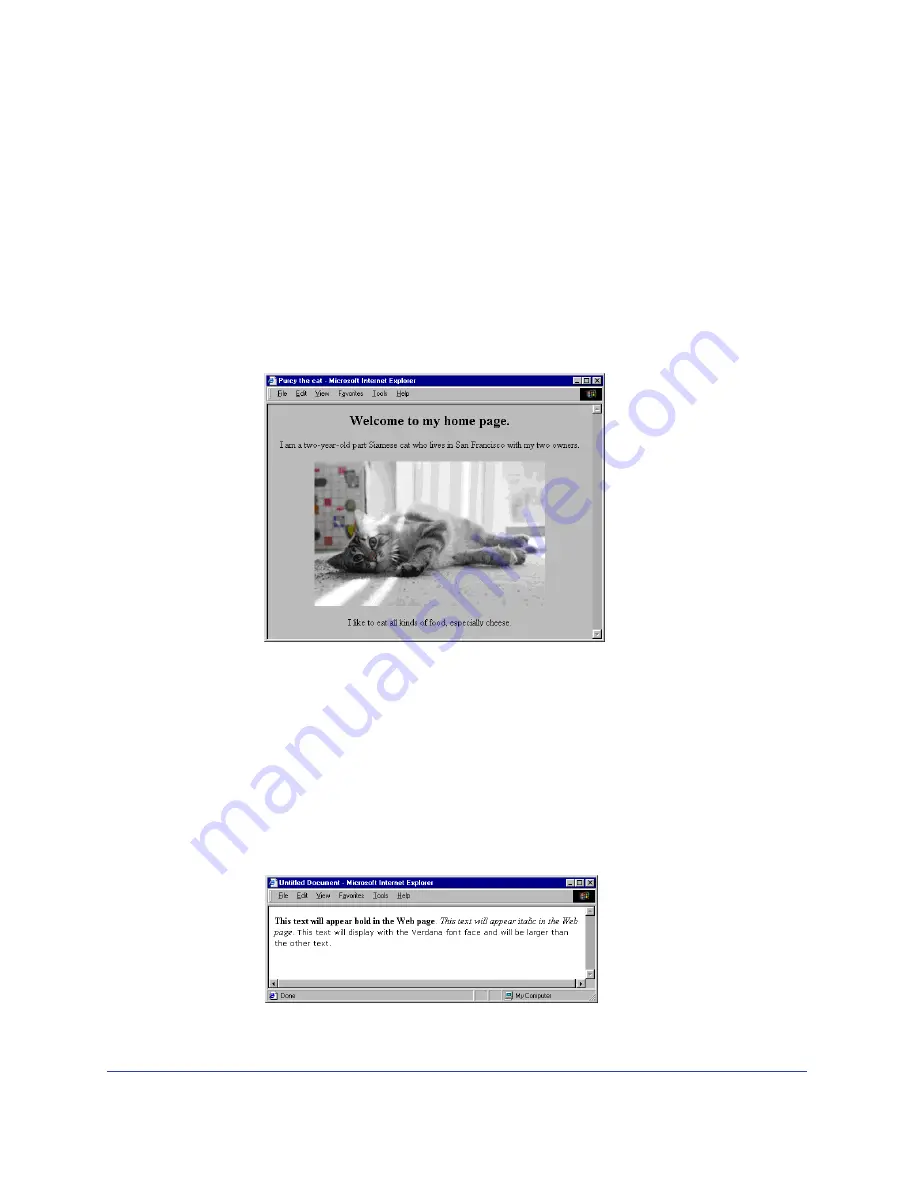
Chapter 14
326
Image tags
insert images in your page. An image tag follows the format
<img src="
imagefilename
">
; you must put the file name of the image between
quotation marks. Image tags also have attributes that you can use, such as
width
,
height
,
border
,
align
, and
valign
. The
width
and
height
attributes specify
the size of your image for the Web browser to interpret; you can set the border
width to 0 or above (images display a border by default when used as links). The
align
and
valign
attributes set alignment of your image:
align
(for horizontal
alignment) can be set to
left
,
right
, or
center
, and
valign
(vertical alignment)
can be set to
top
,
bottom
, or
middle
.
The following example shows a complete image tag:
<img src="cat.gif" width="400" height="250” align=”center”>
Text formatting tags
You can use HTML source code to format the text in your Web page. For
example, you can specify text to be bold or italic and display in a particular font:
<b>This text will appear bold in the Web page</b>.
<i>This text will appear italic in the Web page</i>.
<font face=”verdana” size=”2”>This text will display with the
Verdana font face and will be larger than the other text.</font>
Summary of Contents for 38028779 - Macromedia Dreamweaver - Mac
Page 1: ...macromedia Using Dreamweaver...
Page 148: ...Chapter 4 148...
Page 296: ...Chapter 12 296...
Page 472: ...Chapter 18 472...
Page 512: ...Chapter 21 512...
Page 562: ...Appendix 562...
















































